


7.00pm Thursday 22 May
Royal Festival Hall




7.00pm Thursday 22 May
Royal Festival Hall
The music that we love to play at the Orchestra of the Age of Enlightenment is a tangle of riddles and puzzles. Why did Bach choose the six concertos he did to become the Brandenburg Concertos? What is the secret theme hidden within the Enigma Variations? Why do certain works and composers achieve ‘Greatness’? Why are others overlooked? Why did Beethoven scratch out the dedication to Napoleon of the ‘Eroica’ Symphony? Why did Bruckner never hear his Fifth Symphony? How does music decode human sentiment? Or express the ultimate enigma, humanity’s relationship with the divine?
“I have come to believe that the whole world is an enigma, a harmless enigma that is made terrible by our own mad attempt to interpret it as though it had an underlying truth”
UMBERTO ECO
1. Felix Mendelssohn and Robert Schumann were born a little over a year apart (in 1809 and 1810 respectively). They became friends and collaborators in Leipzig where Schumann had gone to study law in 1828 and Mendelssohn had been appointed as music director of the Gewandhaus Orchestra in 1835.
2. Clara Wieck, the daughter of Schumann’s piano teacher, was born in 1819. She was a prodigious pianist, giving her first public performance aged nine, and a talented composer in her own right. She and Robert married in 1840.
3. Many of Schumann’s solo piano works, and all those for piano and orchestra, were conceived for performance by Clara. She premiered the Piano Concerto in Dresden in December 1845 (as well as the revised version in 1853 in Düsseldorf) and the Introduction & Allegro in Leipzig in February 1850.
These enigmas have always nourished the human imagination. The secret themes, lost manuscripts and broken celebrity crushes that tease us are all part of the thrill. The idea that we might solve the mystery drives us on. If we’re honest, though, we can’t promise to uncover all the answers for you. So that leaves us with a simple choice: go mad… or just decide to enjoy the music!
If there is an underlying truth to be found it is in the act of coming together to share this wonderful, messy cosmos of music – the gathering of the musicians of the OAE with our inspiring artistic partners and you, our audience. Together we might find the secret key: one that unlocks the door to joy, generosity and, of course, Enlightenment.
Thank you for being part of our enigmatic adventure.
4. As a boy, Felix Mendelssohn was fascinated by A Midsummer Night’s Dream and wrote the Overture inspired by it when he was 17 years old. 16 years later he revisited that music when composing incidental music for a production in Potsdam in 1843.
5. Both Robert and Felix died tragically young, but Clara was to live on until 1896 when she was aged 76. She became one of the most respected performers of the 19th Century, touring widely and regularly visiting Britain. She was a friend, artistic partner and inspiration to the likes of the violinist Joseph Joachim and composer Johannes Brahms.
Read Jessica Duchen’s interview with Sir András Schiff on page 4 and Laura Tunbridge’s article ‘A Wealth of Ideas’ on page 6.
Jessica Duchen
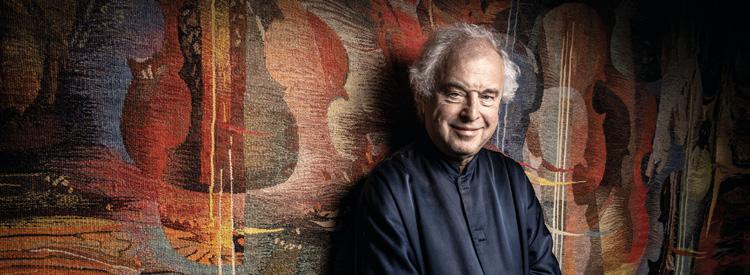
In the mid 1830s at the Leipzig café Zum Coffe Baum, a group of musicians met regularly to put the world to rights over a beer or several. They called themselves the Davidsbündler – the Band of David, against the anti-artistic philistines – and among them were Felix Mendelssohn, who became conductor of the Gewandhaus Orchestra in 1835, plus their de facto leader, a baffling, experimental, moody, preternaturally imaginative composer named Robert Schumann. Tonight Sir András Schiff and the OAE reunite Mendelssohn and Schumann in an inspiring programme centring on the latter’s sole Piano Concerto.
It started life as a single-movement ‘Phantasy’ for piano and orchestra intended for the celebrated young pianist Clara Wieck (whom Schumann married in September 1840). Schiff points out that even after the composer extended it to three movements in 1845, the result remained far from conventional.
‘It’s a very tricky piece, even with a conductor,’ he says wryly (the ensemble performs tonight without one). ‘Perhaps this is because it’s not really a concerto, but a chamber work. It’s a conversation piece, like a Mozart concerto which doesn’t need a conductor. But here, the forces are larger, the language is different and it’s much freer.’ He describes the piano’s role as not heroic soloist, but rather ‘first among equals’.
Clara, as so often in Schumann’s works, is palpably referenced in a musical cipher: ‘The oboe theme in the first movement with the notes C-H (B)-A-A is clearly one of Schumann’s Clara motifs.’ Some of the concerto’s performing traditions, too, probably go back to Clara herself; nevertheless, Schiff questions some recurring tropes in its interpretations. ‘I cannot understand why, after the opening cascade, often the woodwind suddenly play at around half tempo. There is absolutely no indication of that in Schumann’s score. I do insist, whatever the opening tempo is in bar one, that it doesn’t change in bar four.
‘There are numerous tempo changes in the concerto, with many transitions and the improvisatory character that is omnipresent in Schumann’s music. He gives metronome markings to all the movements, and these are sometimes quite surprising. The first movement is minim = 84: I think it’s incredibly fast. The second movement, which people call a slow movement, is not at all a slow movement.’ Headed ‘Intermezzo’, it goes ‘at a moderate pace’.
Yet even the composer sometimes needs questioning. ‘Strangely, in the middle of the first movement, for the A flat major episode, Schumann gives the metronome mark “dotted minim = 72” – which is absolutely identical with the metronome mark of the last movement. But just try to play these two sections in the same time! It feels very strange indeed. There are plenty of examples in Schumann when I don’t think he could have meant something literally.’
As for the finale, catching the right atmosphere and rhythmic sense is just the first of its many challenges. ‘It starts triumphantly, but then you realise that this is a waltz. It has to dance. And it contains an infamous passage where there is a ‘hemiola’ – a constant, three-against-two pattern. Here, if a conductor tries to beat time, then you are in trouble – but not if you are just making music and listening to each other.
‘When we work on this passage, I say to orchestral musicians or students that we should try to ignore the bar lines, because the bar lines are the trouble! A bar line is not music. Bar lines are like walls of prison cells, and we must liberate ourselves from those walls. They are a necessity for notating music, but that is their only function. In this passage one must not indicate the downbeats, but rather conceal them.’
How does all this work without a conductor? ‘Well,’ Schiff says, with a smile, ‘you need a perfect orchestra. By which I mean an orchestra which is not really an orchestra – like my Cappella Andrea Barca, the Chamber Orchestra of Europe, or the OAE. They make music with a chamber music attitude, with give and take, listening to each other.’
The OAE’s 19th-century instruments, he says, create crucial transparency in the orchestral textures: ‘There is a certain lightness; this is not a heavyweight concerto.’ He is playing a Blüthner piano from the 1850s, ‘slightly later than the concerto, but not dramatically so. It comes from southern Germany, near Freiburg. It’s a lovely piano and I think it’s very good for these pieces.
‘Early pianos are never bass-heavy because of their parallel-strung strings, and the bass strings are much thinner than on a modern concert grand. Each register of the keyboard is different: not evenly spread, but with distinct sonic character and a beautiful cantabile tone. Obviously it doesn’t have the volume of today’s concert grands, but some years ago I played the Schumann Concerto on a Streicher piano from a Dutch collection in the Royal Festival Hall, where sometimes one can have difficulties projecting across an orchestra even with a very powerful modern piano. But on this period instrument, it was no problem whatsoever.’
Schiff and the OAE have programmed the concerto with works that complement it, the first being the Konzertstück for PIano and Orchestra, Op. 92 –enjoying a much-deserved moment in the sun. ‘It is a very poetic piece with fantastic writing, especially for the winds and the prominent solo horn,’ Schiff says. ‘Horn players love it!’ Why is this rare gem so neglected? ‘In a usual concert format, a piece about a quarter of an hour long can be awkward to programme. Usually you don’t just play a 15-minute piece; you have to play another one or two. Still, that shouldn’t be an obstacle…’
The concerto’s first movement, he points out, originally stood alone and could have been similar. ‘It’s a perfect movement. Then he added the other two – and the way he goes from the Intermezzo into the finale with that transitional passage, the model may have been the Mendelssohn Violin Concerto, which is also beautifully through-composed.’
And Mendelssohn completes the programme: extracts from his incidental music to A Midsummer Night’s Dream form an encore of sorts to the unforgettable series of Mendelssohn concertos and symphonies that Schiff and the OAE performed a year ago.
‘I wanted to revisit Mendelssohn and there is nothing I love from him more than this music,’ Schiff says. ‘It is really out of this world. Some people have maintained that Mendelssohn is a wonderful composer, but didn’t bring anything new into music. I think this is a false accusation. Think of this feather-light Scherzo; and think of his understanding of Shakespeare at such a young age. The Overture is a composition of someone scarcely more than a child, but when you hear those opening four chords, it’s just magical. Something special happens to the listener.’
Mendelssohn and Schumann seem a perfect pairing. You could almost imagine that tonight the Davidsbündler are returning to relish another performance, side by side in harmony.
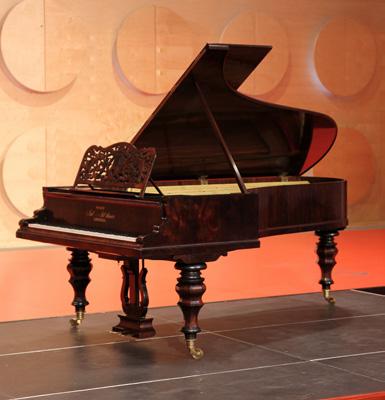
This evening, Sir András Schiff performs on the Blüthner No. 726. Built around 1859; a precise date is difficult to determine as the archives of the Blüthner Company were destroyed in World War II; it has a rosewood case and its ‘Blüthner-PatentMechanik’ has been extensively restored. It is one of the biggest instruments produced by Blüthner at the time, at 255 cm long, with two pedals – a dampening cancellation (sustaining) and ‘una corda’ (soft) pedals – and is tuned to A = 438Hz.
Julius Blüthner (1824 – 1910) established his factory in Leipzig in 1853. He was endowed with an entrepreneurial flair and travelled to trade fairs across the world demonstrating his instruments which were renowned for their innovation and quality craftsmanship. Particular attention was paid to the soundboards made from Alpine wood, whilst in this instrument the strings in the bass run parallel (rather than cross-wise as with a modern instrument) and Blüthner’s unique mechanics give the pianist a very sensitive and controlled touch. This results in the distinctive sound of Blüthner pianos with their careful balance between a dark yet transparent bass register and the “sparkling” treble notes.
The reputation of Blüthner’s pianos was built on critical praise from a number of high profile performers. Composers who have visited the factory or owned the instruments have included Schumann, Liszt, Brahms, Tchaikovsky, Mahler and Rachmaninov.
The Blüthner No. 726 is part of the collection of Clavierwerkstatt Christoph Kern in Staufen, Germany where it was restored.
Thursday 22 May 2025
7.00pm at the Southbank Centre’s Royal Festival Hall
ROBERT SCHUMANN (1810 – 1856)
Konzertstück (Introduction and Allegro appassionato) for Piano and Orchestra
I. Introduction. Langsam
II. Allegro
FELIX MENDELSSOHN (1809 – 1847)
A Midsummer Night’s Dream
Overture (Op. 21)
Intermezzo (Op. 61, No. 5)
Nocturne (Op. 61, No. 7)
Scherzo (After the First Act) (Op. 61, No. 1)
Interval
SCHUMANN
Piano Concerto
I. Allegro affettuoso
II. Intermezzo – Andantino grazioso
III. Allegro vivace
ORCHESTRA OF THE AGE OF ENLIGHTENMENT
Matthew Truscott leader
Sir András Schiff fortepiano / director
This concert is supported by Adrian Frost and Mark & Rosamund Williams
There will be a pre-concert talk at 6.00pm in the Southbank Centre’s Level 5 Function Room, Green Side, Royal Festival Hall with Professor Laura Tunbridge and oboist Daniel Bates discussing Schumann’s life and music.
Violins I
Matthew Truscott*
Daniel Edgar
Rodolfo Richter
Kenichiro Aiso
Huw Daniel*
Alice Evans
Claudia Delago-Norz
Rebecca Livermore
Violins II
Kati Debretzeni*
Andrew Roberts
Deborah Diamond
Claire Holden
Silvia Schweinberger
Iona Davies
Dominika Fehér
Henry Tong
Violas
Max Mandel*
Martin Kelly
Annette Isserlis
Kate Heller
Lisa Cochrane
Christopher Beckett
Cellos
Andrew Skidmore
Catherine Rimer
Ruth Alford
Helen Verney
Double basses
Christine Sticher*
Cecelia Bruggemeyer
Carina Cosgrave
Flutes
Lisa Beznosiuk*
Rosie Bowker
Oboes
Daniel Bates*
Matthew Draper
Clarinets
Katherine Spencer*
Sarah Thurlow
Bassoons
Philip Turbett
Sally Jackson
Horns
Roger Montgomery*
Martin Lawrence
Trumpets
David Blackadder*
Phillip Bainbridge
Ophicleide
Anthony George
Timpani
Adrian Bending*
*OAE principal players

As a young man, Robert Schumann had hoped to become a virtuoso pianist and, while he had to put those dreams aside after a hand injury, he remained invested in the piano concerto as a form. As a music critic in the late 1830s, Schumann complained about the ‘crisis’ in concerto composition, noting that relatively few were being produced. He agitated for a new approach to writing for piano and orchestra, which would combine the two, ‘so that the master at the keyboard can unfold the wealth of his instrument and his artistry while the orchestra does not merely look on but brings increased artistry into play’. Improvised roulades and the like should be abandoned in favour of compositional virtuosity, which concentrated on expanding musical forms. In particular, Schumann advocated for a single movement work, ‘of some length in a moderate tempo, in which an introductory section would take the place of an opening allegro, a cantabile section would replace the adagio, and a brilliant ending would take the place of a rondo.’ The three concerto works for piano and orchestra which Schumann composed over the course of his career – the Piano Concerto, (op. 54), the Concert Piece (Introduction and Allegro apppasionato), (op. 92), and the Concert-Allegro with Introduction, (op. 134) –were all conceived according to a one-movement pattern.
1849 was Robert Schumann’s most prolific year. Unlike earlier in his career, when he tended to concentrate on one genre at a time (the Liederjahr or ‘year of song’ being the prime example), he composed piano and chamber music, song, choral pieces, opera, and two concerted works: the Konzertstück for four horns and orchestra, (op. 86), and the Introduction and Allegro appassionato for piano and orchestra, (op. 92). The latter was composed in less than a fortnight in September. In his Projektbuch, Schumann listed a ‘Piano Concerto with a distinctive form’. His wife Clara noted in her diary: ‘I am very much looking forward to playing it. It is very passionate and that is certainly how I shall play it’. She gave the first performance at the Leipzig Gewandhaus on 14 February 1850. Subsequently, Schumann revised the coda and the final version received its premiere on 14 March 1851 in Düsseldorf – by then, the Schumanns’ new home. The Rheinische MusikZeitung reported that Clara Schumann ‘evinced surprising power and stamina in her performance’: ‘In this piece of music with its genuinely symphonic character the masterly interweaving of the piano and orchestral parts is admirable in the highest degree and
includes very delicate and genuinely new tonal effects […] it goes without saying that the applause was tempestuous’.
August Wilhelm Schlegel’s German translations of Shakespeare’s plays were reissued in 1825. Among their avid readers was a teenaged Felix Mendelssohn who, having recently completed his Octet, within a month wrote an overture to A Midsummer Night’s Dream. It was greeted with acclaim at its first performances, Mendelssohn making an impression at its 1827 premiere in Stettin as composer of the Overture, soloist (alongside Carl Loewe) in his Concerto for two pianos and orchestra, and violinist in a performance of Beethoven’s Ninth Symphony.
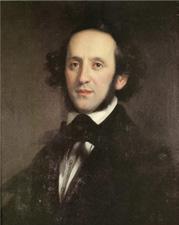
Mendelssohn returned to Shakespeare’s play sixteen years later, having received a commission from Friedrich Wilhelm IV after the success of his incidental music for Sophocles’s Antigone. It was an especially busy time for Mendelssohn, who was splitting his time between composing and conducting for in Berlin and setting up a new music conservatoire in Leipzig (where, incidentally, Robert and Clara Schumann were on the faculty). Eventually he was persuaded by Ludwig Tieck to supply incidental music for a performance of A Midsummer Night’s Dream to be given in Potsdam in celebration of the King’s birthday on 14 October 1843. Sold-out performances at Berlin’s Schauspielhaus followed and selections from the incidental music – like the Overture beforehand – swiftly entered the repertoire.
Mendelssohn’s concert overture A Midsummer Night’s Dream had been a stand-alone symphonic portrait of Shakespeare’s play. He mined its motifs in the incidental music, making it an unusually coherent score for a theatrical production of the time. For instance, the chromatic scales heard ascending in the Scherzo and descending in the Intermezzo, are derived from the Overture’s distinctive opening four chords. The music he composed for ‘between the acts’ constituted more extended instrumental works, rather than accompaniment for action on stage.
The Scherzo, which in the play follows Act 1, introduces the magical world of Oberon and Titania. In Act 2, Oberon instructs Puck to concoct a magical juice from a flower called ‘love-inidleness’: if applied to someone’s eyelids while they sleep, they will fall in love with the first person they see on waking. This being Shakespeare, matters become complicated: Puck applies the spell to the wrong eyelids, causing confusion between the
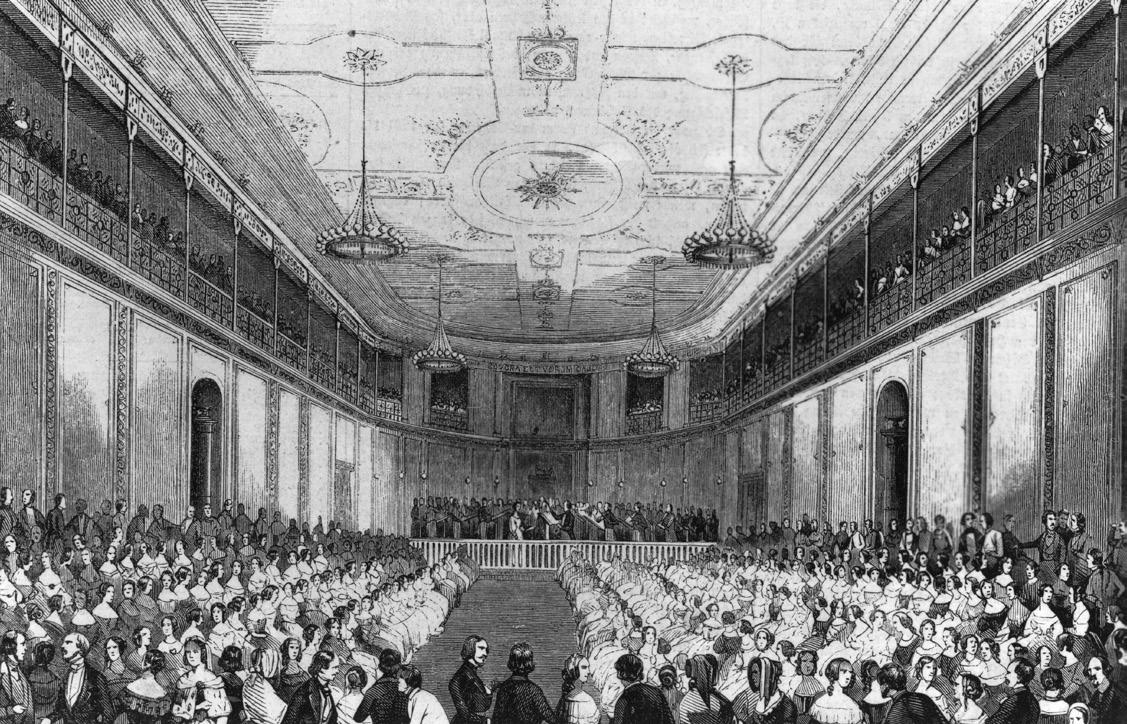
sets of lovers. The Intermezzo between the second and third act evokes Hermia’s nighttime search for Lysander in the forest. The Nocturne, after act 3, sets the scene for Puck reapplying the spell, so that when the sleeping Lysander wakes he will fall in love with the right person. Music and magic combine throughout Shakespeare’s play and their powers are conjured in Mendelssohn’s score. Although, in his 1844 review of a performance of the incidental music, Robert Schumann thought that the ‘fairy parts’ might have been overstated, its gossamerlike textures have come to be thought of as quintessentially Mendelssohnian.
Robert Schumann’s Piano Concerto, (op. 54), began life as a single movement Phantasie, in 1841; it developed into a three-movement Concerto by 1845 and then was revised in 1853. The first version, the Phantasie, was run through in Leipzig on 13 August 1841 by the Gewandhaus orchestra conducted by Ferdinand David, with a heavily pregnant Clara Schumann at the piano. The Schumanns’ first child Marie was born on 1 September; Mendelssohn was her godfather. Distracted by parenthood and other work, Robert Schumann did not return to the Phantasie until early 1843. A plan to give the first public performance that February was postponed in favour of Schumann’s Piano Quintet, and his efforts to get the Phantasie published came to nothing. Only after the Schumanns had moved from Leipzig to Dresden in summer 1844, did his thoughts return to the piece. The following year, Robert Schumann added a finale and then a slow movement.
Clara Schumann began to learn the new, three-movement Piano Concerto, on 3 September 1845, commenting in her diary: ‘How rich in invention it is, how interesting from beginning to end, how fresh, and what a beautiful coherent whole it is! I feel a true
delight when studying it’. She played it before a small audience at the home of her father, Friedrich Wieck, but it took some time to organise a public premiere, as the Schumanns were keen for it to be conducted by Mendelssohn in Leipzig. In the end those plans had to be abandoned and it received its first performance in Dresden on 4 December 1845. The conductor was Ferdinand Hiller, to whom the Piano Concerto was dedicated. Critics recognised it as ‘one of the composer’s best works […] it succeeds in preserving the independence of both parts in a combination of great beauty. Amid the countless ephemera which each week brings forth […] it is a veritable delight to encounter for once such a worthy and accomplished work’. It was first heard in Leipzig at their New Year’s Day concert on 1846 where, according to one of Clara Schumann’s letters, ‘the level of musical appreciation is far ahead of that to be found in Dresden’. Clara was the soloist; again, she was heavily pregnant (Emil Schumann, their fourth child, was born on 8 February). The Allgemeine musikalische Zeitung described the Concerto as painting ‘a musical picture in a symphonic manner with the piano playing the main part’.
Robert Schumann’s Piano Concerto, perhaps more so than any of his pieces, encapsulates the creative synergies between him as composer and Clara as pianist. The main theme of the first movement, with the notes C-B-A-A, might be a covert dedication to Clara – the note B in German musical spelling is known as H, and Chiara was her code-name in Schumann’s meta-fictional Davidsbund (League of David). There is also a quotation from Clara Schumann’s Piano Sonata in G minor (1841), in figuration in the second movement. But perhaps the most significant tribute to her artistry is in the symphonic conception of the concerto. The Schumanns’ shared disdain for ‘empty’ virtuosity
was illustrated in Robert Schumann’s decision to compose his own cadenza for the first movement, and Clara Schumann’s willingness to comply with his less flashy design. The esteemed Viennese critic Eduard Hanslick observed the benefits of this unusual approach: ‘The antiquated custom […] of the composer giving the performer carte balance for any concerto whatsoever, often blatantly at odds with the style and proportions of the work as a whole, could not possibly be tolerated by Schumann. He himself composed the cadenza, which is on the more modest scale and much less a matter of one bravura passage after another than a product of the free imagination, with a wealth of ideas.’ This is not to say that the Piano Concerto is without technical demands, from the opening cascade of chords to the finale’s brilliant passagework.
The first performance of the Piano Concerto in Düsseldorf took place on 17 May 1853, at the 31st Lower Rhine Music Festival, with Ferdinand Hiller again conducting. (For once, Clara Schumann was not pregnant; their last child, Felix, was born in June 1854.) Already during Robert Schumann’s lifetime, it became one of the most frequently performed piano concertos of the nineteenth century. Of the 190 performances that took place between 1845 and 1900, more than 100 were given by Clara Schumann, who continued to perform it until 7 March 1887; she gave her last public concert in 1891.


Sir András Schiff is world-renowned as a pianist, conductor, pedagogue and lecturer. Born in Budapest, Hungary, in 1953, Sir András studied piano at the Liszt Ferenc Academy with Pal Kadosa, György Kurtág, and Ferenc Rados; and in London with George Malcolm.
He has performed cycles of complete Beethoven sonatas and the complete works of JS Bach, Haydn, Schubert and Bartók, which constitute an important part of his work. Having collaborated with the world’s leading orchestras and conductors, he now focuses primarily on solo recital, play-conducting appearances, and exclusive conducting projects. In the 2022 – 2023 season, he was named Artist-In-Residence by the New York Philharmonic, with whom he performed nine concerts. His Bach has become an annual highlight at the BBC Proms, and he regularly performs at the Verbier, Salzburg and Baden-Baden Festivals as well as Wigmore Hall.
Vicenza is home to Cappella Andrea Barca, his own chamber orchestra founded in 1999, comprised of international soloists, chamber musicians and friends. He curates an annual festival in Vicenza at the Teatro Olimpico. Sir András enjoys close
relationships with the Chamber Orchestra of Europe, Budapest Festival Orchestra, and Orchestra of the Age of Enlightenment. In 2018 he accepted the role of Associated Artist with the OAE, complementing his interest in performing on period keyboard instruments.
With a prolific discography, he established an exclusive relationship in 1997 with producer Manfred Eicher and ECM New Series. Highlights have included the complete Beethoven Piano Sonatas recorded live from Zurich; solo recitals of Schubert, Schumann and Janáček; and JS Bach’s Partitas, Goldberg Variations, and Well-Tempered Clavier. His most recent release features Brahms and Schumann Violin Sonatas with Yuuko Shiokawa, released in late 2024.
Sir András Schiff’s many honors include the International Mozarteum Foundation’s Golden Medal (2012), Germany’s Great Cross of Merit with Star (2012), the Royal Philharmonic Society’s Gold Medal (2013), a Knighthood for Services to Music (2014) and a Doctorate from the Royal College of Music (2018). He was awarded the Jean Gimbel Lane Prize in Piano Performance in 2021 from The Henry and Leigh Bienen School of Music at Northwestern University. In 2024, he received the Austrian Cross of Honour for Science and Art as well as the Bösendorfer Ring.
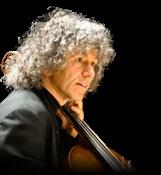
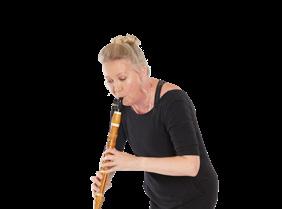
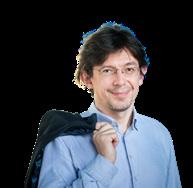


Southbank Centre Season 2025 / 26
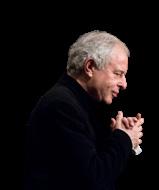
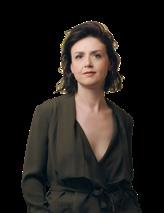

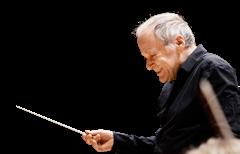
Celebrating 40 years of the OAE
1986. It was the year of the Westland Affair, the Chernobyl nuclear disaster, the infamous ‘Hand of God’ goal at the World Cup in Mexico, the premiere of Harrison Birtwistle’s opera The Mask of Orpheus… and in late June Wham! were at number 1 in the UK charts with The Edge of Heaven. On 26 June, the Orchestra of the Age of Enlightenment first stepped on to a stage.
Sunday 12 October SOLOMON
Thursday 27 November
HAYDN: FROM ESTERHÁZA TO HANOVER SQUARE
Sunday 1 February
MOZART’S WORLD: A LITTLE NIGHT MUSIC
Sunday 8 February IT SHALL CERTAINLY NOT BEND AND CRUSH ME COMPLETELY Beethoven Symphonies Nos. 4 & 5
Thursday 26 February
MOZART’S WORLD: THE LAST SYMPHONIES
Sunday 29 March ST JOHN PASSION
Wednesday 27 May THE CREATION
Wednesday 3 June LIFE OF THE SEA
Wednesday 10 June SYMPHONIE FANTASTIQUE
Wednesday 24 June VIENNA 1897: BRAHMS’ LAST CONCERT

By including us in your will, you can support the OAE for years and decades to come. All legacy gifts enable us to perform at the highest level on concert stages and in schools across the country.
Everyone who chooses to leave a gift to the OAE in their will is invited to join the 1986 Society. The name of the Society pays tribute to our history and the year the Orchestra was founded. As a member of the Society, you will help us support our next 40 years. Members of the Society enjoy exclusive benefits, including an invitation to an annual behind-the-scenes event where you can see how your support brings exceptional musical experiences to life.
If you would like to discuss leaving a legacy with someone from the OAE, please contact Hattie at hattie.rayfield-williams@oae.co.uk or call 020 8159























AIn 1986, a group of inquisitive London musicians took a long hard look at that curious institution we call the Orchestra, and decided to start again from scratch. They began by throwing out the rulebook. Put a single conductor in charge? No way. Specialise in repertoire of a particular era? Too restricting. Perfect a work and then move on? Too lazy.
The Orchestra of the Age of Enlightenment was born.
nd as this distinctive ensemble playing on period-specific instruments began to get a foothold, it made a promise to itself. It vowed to keep questioning, adapting and inventing as long as it lived. Residencies at the Southbank Centre and the Glyndebourne Festival Opera didn’t numb its experimentalist bent. A major record deal didn’t iron out its quirks. Instead, the OAE examined musical notes with ever more freedom and resolve.
In keeping with its values of always questioning, challenging and trailblazing, in September 2020, the OAE became the resident orchestra of Acland Burghley School, Camden. The residency – a first for a British orchestra – allows the Orchestra of the Age of Enlightenment to live, work and play amongst the students of the school.

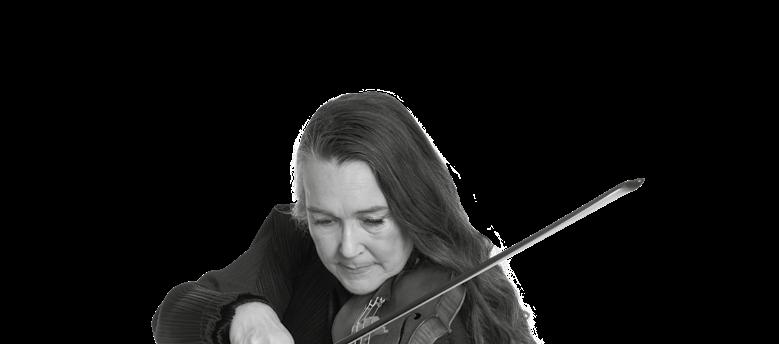

That creative thirst remains unquenched. The Night Shift series of informal performances are redefining concert formats. Its former home at London’s Kings Place has fostered further diversity of planning and music-making. The ensemble has formed the bedrock for some of Glyndebourne’s most groundbreaking recent productions.
Now nearly 40 years old, the OAE is now part of the UK’s musical furniture. It has even graced the outstanding conducting talents of John Butt, Elder, Adam Fischer, Iván Fischer, Vladimir Jurowski, Sir Simon Rattle and Sir András Schiff with a joint title of Principal Artist. But don’t ever think the ensemble has lost sight of its founding vow. Not all orchestras are the same. And there’s nothing quite like this one.
Andrew Mellor
CHIEF EXECUTIVE
Crispin Woodhead
CHIEF OPERATING OFFICER
Edward Shaw
BUSINESS DEVELOPMENT
Business Development Director
Jo Perry
DEVELOPMENT
Head of Grants
Madison Hallworth
Development Director
Harry Hickmore
Development Officer
Emma Badman
Head of Individual Giving
Hattie Rayfield-Williams
DIGITAL
Head of Digital Content
Zen Grisdale
EDUCATION
Education Director
Cherry Forbes
Education Officer
Sofia Swenson-Wright
FINANCE
Finance Manager
Malik Akash
Finance Director
Mary Price
Accounts Officer
Chloe Tsang
MARKETING
Marketing Director
Doug Buist
Ticketing & Data Manager
Paola Rossi
Marketing Officer
Dora Tsang
PROJECTS
Projects Director
Sophie Adams
Projects Manager
Ed Ault
Orchestra Consultant
Philippa Brownsword
Choir Manager
David Clegg
Librarian
Roy Mowatt
OAE-Acland Burghley
School Link
Anna Rimington
LEADERS
Huw Daniel
Kati Debretzeni
Margaret Faultless
Matthew Truscott
PLAYERS’ ARTISTIC COMMITTEE
Cecelia Bruggemeyer [Chair]
Alexandra Bellamy
Daniel Edgar
Katherine Spencer
Christine Sticher
PRINCIPAL ARTISTS
John Butt
Sir Mark Elder
Adam Fischer
Iván Fischer
Vladimir Jurowski
Sir Simon Rattle
Sir András Schiff
EMERITUS CONDUCTORS
William Christie
Sir Roger Norrington
LIFE PRESIDENT
Sir Martin Smith
BOARD OF DIRECTORS
Imogen Charlton-Edwards [Chair]
Daniel Alexander
Alexandra Bellamy
Cecelia Bruggemeyer
Daniel Edgar
Denys Firth
Adrian Frost
Alison McFadyen
David Marks
Katherine Spencer
Christine Sticher
Dr. Susan Tranter
Emma-Jane Willan
Elly Williamson
Crispin Woodhead
OAE TRUST
Adrian Frost [Chair]
Mark Allen
Imogen Charlton-Edwards
Dino Fontes
Paul Forman
Jessica Kemp
Maarten Slendebroek
Jessica Smith
Sir Martin Smith
Caroline Steane
Season identity by
Hannah Yates
THE WHOLE WORLD IS AN ENIGMA at the Southbank Centre
4 June
ENIGMA VARIATIONS with Frances Gregory (mezzo-soprano) and Dinis Sousa (conductor)
26 June
THE MAGIC FLUTE AND THE BIRD THAT WOULD BE FREE A high-spirited family show based on Mozart’s The Magic Flute created by composer James Redwood and writer Hazel Gould
OAE TOTS for 2 – 5 year olds with their parents or carers at the Southbank Centre
28 June
ENCHANTED TOTS
THE NIGHT SHIFT
Chamber music down a local pub
New season coming in September 2025
BACH, THE UNIVERSE AND EVERYTHING at Kings Place
Mission: to explore our place in the cosmos guided by the intergalactic genius of JS Bach. Each monthly event features one of Bach’s cantatas, and other choral and instrumental works, alongside a talk by an eminent astronomer.
New season coming in Autumn 2025

We’re the UK’s largest centre for the arts and one of the nation’s top five visitor attractions, showcasing the world’s most exciting artists at our venues in the heart of London. As a charity, we bring millions of people together by opening up the unique art spaces that we care for.
The Southbank Centre is made up of the Royal Festival Hall, Queen Elizabeth Hall, Purcell Room, Hayward Gallery, National Poetry Library and Arts Council Collection. We’re one of London’s favourite
meeting spots, with lots of free events and places to relax, eat and shop next to the Thames.
We hope you enjoy your visit. If you need any information or help, please ask a member of staff. You can also write to us at Southbank Centre, Belvedere Road, London SE1 8XX, or email hello@ southbankcentre.co.uk
Subscribers to our email updates are the first to hear about new events, offers and competitions. Just head to our website to sign up.
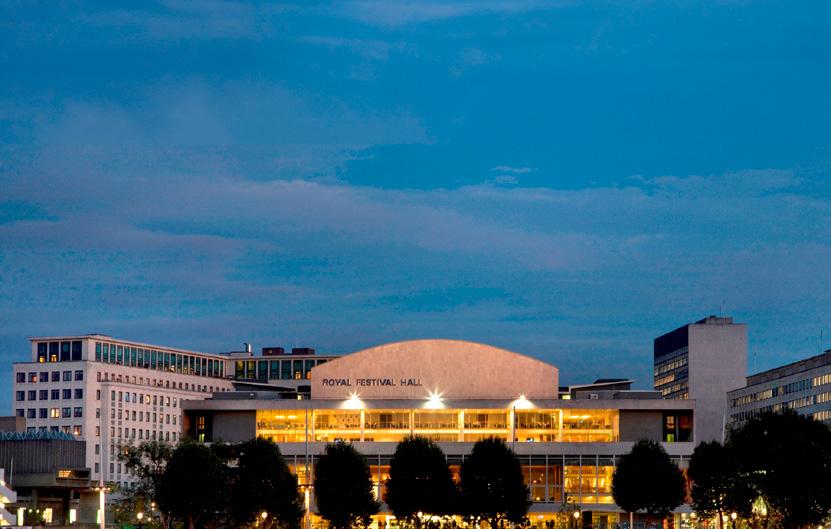
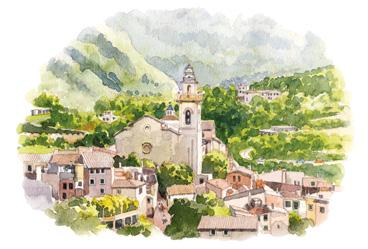
Speak
Kirker Holidays creates carefully-crafted short breaks and tailormade holidays for discerning travellers, including individually selected four- and five-star hotels, private transfers, flights from your local airport and the services of the Kirker Concierge to book expert local guides, tickets for opera, ballet and concerts or a table reservation at a recommended restaurant.
For those who enjoy travelling with a group of like-minded companions in the company of an expert tour leader, Kirker’s range of Cultural Tours & Music Holidays are designed to appeal to interests including Art, History, Architecture, Gardens and Music.
Each of our carefully-curated Exclusive Kirker Music Festivals includes a series of private concerts with international musicians of the highest calibre. Guests and performers alike particularly enjoy the rapport between audience and artists which is generated during the course of Kirker drinks parties, concerts and workshops.





This looks like a long list, doesn’t it? But these generous people and organisations provide OAE with around half of our income every year. Contact us on development@oae.co.uk if you would like to join us as a supporter.
Principal Patrons
Imogen Charlton-Edwards
Denys and Vicki Firth
Adrian Frost
Sir Martin and Lady Smith OBE
Dr Tony Trapp MBE
Season Patrons
Julian and Annette Armstrong
Victoria and Edward Bonham Carter
Nigel Jones and Françoise Valat-Jones
Philip and Rosalyn Wilkinson
Mark and Rosamund Williams
Project Patrons
Ian S Ferguson CBE and Dr Susan Tranter
Bruce Harris
Selina and David Marks
ABS Circle
Mark and Susan Allen
Sir Victor and Lady Blank
Peter Cundill Foundation
The Vernon Ellis Foundation
Sir Martin and Lady Smith OBE
Aria Patrons
Joanna and Graham Barker
Steven Larcombe
Peter and Veronica Lofthouse
Stanley Lowy
Alison McFadyen
Peter Rosenthal
Maarten and Taina Slendebroek
Caroline Steane
Eric Tomsett
Chair Patrons
Daniel Alexander KC Principal Cello
Katharine Campbell Violin
Anthony and Celia Edwards
Principal Oboe
Claire Espiner Cello
James Flynn KC – In Memoriam
Co-Principal Lute / Theorbo
Paul Forman
Co-Principal Cello, Violin & Co-Principal Horn
Jonathan Gaisman Viola
Jane Gilbert Principal Flute
Andrew Green KC and Jennifer Hirschl Principal Clarinet
Melanie J. Johnson
Michael and Harriet Maunsell
Principal Keyboard
Christina M Flute
Jenny and Tim Morrison
Second Violin
Andrew Nurnberg Co-Principal Oboe
Stephen and Penny Pickles Viola
Professor Richard Portes CBE FBA
Co-Principal Bassoon
John and Rosemary Shannon
Principal Horn
Sir Timothy and Lady Lloyd
Susan Palmer OBE
Andrew and Cindy Peck
Professor Richard Portes CBE FBA
Crispin Woodhead and Christine Rice
Sue Sheridan OBE
Associate Patrons
Damaris Albarrán
Noël and Caroline Annesley
Sir Richard Arnold and Mary Elford
William Barham
Lady Sarah Bowness
David and Marilyn Clark
David Emmerson
Dino Fontes and David Stinson
Lorna Gradden
Roger Heath MBE and Alison Heath MBE
Peter and Sally Hilliar
Philip Hughes
Breandán Knowlton
Kathryn Langridge
Moira and Robert Latham
Sir Timothy and Lady Lloyd
Roger Mears and Joanie Speers
David Mildon in memory of Lesley Mildon
Gary and Nina Moss
John Nickson and Simon Rew
Andrew and Cindy Peck
Tim and Kate Price
Tim Rhys-Morgan
Jan Schlapp –
Rehearsal Soup Patron
Michael Spagat and Karen Lauxmann
Roger and Pam Stubbs
Emily Stubbs and Stephen McCrum
Simon and Karen Taube
Shelley von Strunckel
Mr J Westwood
OAE NextGen
Marina Abel Smith
Mr Andrew Philip Chambe Barratt
Marianne and William
Cartwright-Hignett
Mr Harry Hickmore
Jessica and Alex Kemp
Gold Friends
Michael Brecknell
Gerard Cleary
Sir Anthony Cleaver
Mr and Mrs C Cochin De Billy
Sarah Lady Gough
Chris Gould
Roger Lewis
Alison and Ian Lowdon
Mr Michael Mackenzie
Silver Friends
Tony Burt
Haylee and Michael Bowsher
George and Kay Brock
Sir Anthony Cleaver
David Cox
Martin Edmunds
Stephen and Cristina Goldring
Nicola Haskins
Malcolm Herring
Patricia Herrmann
Rupert and Alice King
Rose and Dudley Leigh
Anthony and Carol Rentoul
Bridget Rosewell
Mr and Mrs J.Rossi
Rupert Sebag-Montefiore
Susannah Simons
Her Honour Suzanne Stewart
Bronze Friends
Tony Baines
Penny and Robin Broadhurst
Dan Burt
Cynthia Butterworth
Michael A Conlon
Mrs SM Edge
Ms Hannah Field
Mrs Mary Fysh
Sarah Lady Gough
Martin and Helen Haddon
The Lady Heseltine
Mrs Auriel Hill
Sir Roger Jackling
Bill Marshall
Mr Simon Moore
Richard I Morris Jr
Mr Matthew Pollitt
Mike Raggett
Alan Sainer
Mr James Stratford
Steve and Jackie Street
Mr and Mrs Tony Timms
Mr John Truscott
Mr and Mrs Michael Vernell
Mrs Joy Whitby
Trusts & Foundations
The 29th May 1961 Charitable Trust
Arts Council England
The Britford Bridge Trust
Cockayne – Grants for the Arts
Dreamchasing
The Foyle Foundation
Garfield Weston Foundation
Henocq Law Trust –
The Ann and Peter Law
OAE Experience Scheme
John Armitage Charitable Trust
John Lyon’s Charity
The Linbury Trust
The Neville Abraham Foundation
Paul Hamlyn Foundation
The Roger and Ingrid Pilkington Trust
Skyrme Hart Charitable Trust
Albert and Eugenie Frost Music Trust
Apax Foundation
The Aspinwall Educational Trust
The Charles Peel Charitable Trust
The de Laszlo Foundation
The D’Oyly Carte Charitable Trust
The Garrick Charitable Trust
The Golsoncott Foundation
Idlewild Trust
The John Thaw Foundation
The Michael Marks Charitable Trust
Orchestras Live
The Patricia Routledge Foundation
The Patrick Rowland Foundation
Scops Arts Trust
Thirplow Charitable Trust
The Thistle Trust
Vaughan Williams Foundation
Corporate Supporters
Cevian Captial
Mark Allen Group
Inama
WSP
Honorary Council
Sir Martin Smith [Chair]
Sir Victor Blank
Edward Bonham Carter
Cecelia Bruggemeyer
Nigel Jones
Max Mandel
Marshall Marcus
Julian Mash
Greg Melgaard
Roger Montgomery
Susan Palmer OBE
David Pickard
Jan Schlapp
Diane Segalen
Susannah Simons
Lady Smith OBE
Emily Stubbs
Rosalyn Wilkinson
Mark Williams
Thank you to OAE Friends, Supporting Friends and supporters who wish to remain anonymous.



Joanna Wyld explores how the composers in our season were supported by a cast of generous and often quirky patrons.

Few who have read Jane Austen’s Pride and Prejudice could forget Mr Collins waxing lyrical about his patroness, Lady Catherine de Burgh. In music history, the dynamic between patrons and those they support is usually more nuanced, often resulting in real friendship. Even so, composers sometimes had to resort to similar tactics: JS Bach showed Mr Collinsesque levels of flattery in the dedication of his Brandenburg Concertos to Christian Ludwig, Margrave of Brandenburg-Schwedt, in which he referred modestly to his own ‘little talents’. Barbara Strozzi, meanwhile, was determined to make a living for herself, and did so by dedicating compositions to patrons including Ferdinand II of Austria and Eleanor of Mantua.
Handel’s royal patrons made some elaborate requests: his Water Music was written for George I’s boat party on the Thames, while the Music for the Royal Fireworks was for George II’s display in Green Park. The music went well, the fireworks less so: some were rained on, some flew off, and others set fire to the stage.
Felix Mendelssohn was a favourite with Queen Victoria and Prince Albert, writing vivid accounts of visiting them and their pet parrot: ‘It was a delightful day! Just as the Queen was going to sing she said: “The parrot must be taken out or he will scream louder than I can sing”’. Some of Beethoven’s patrons even knew each other; Count Razumovsky said of Prince Lobkowitz: ‘He played music from dusk to dawn and spent a fortune on musicians. Innumerable musicians gathered in his house, whom he treated regally.’
Love our Southbank Centre concerts?
Join us as a Friend of the OAE today and help bring exceptional music to life. As a Friend, you’ll experience concerts like never before, gaining both front-row access and behind-the-scenes insights. Enjoy priority booking for our entire season, attend open rehearsals, and connect with our musicians at exclusive membership events. For just £50 a year, you can enjoy these benefits and be a part of our 40th anniversary celebrations, supporting an ambitious and inspiring 2025 / 26 Season.
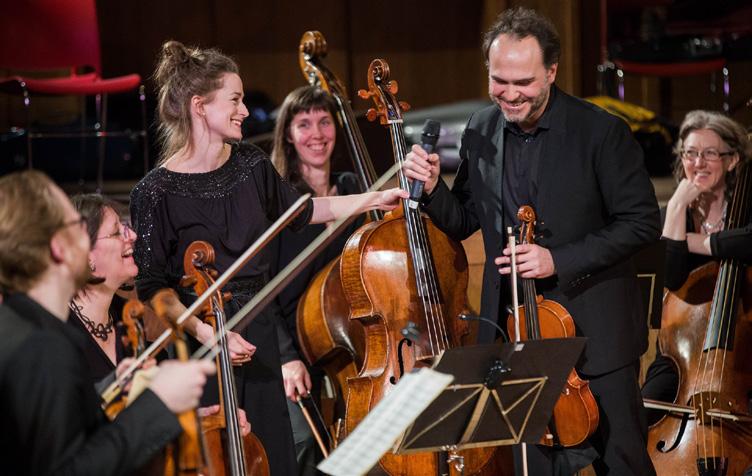
To become a Friend, scan the QR code, visit oae.co.uk/support-us or contact us at development@oae.co.uk or 020 8159 9317
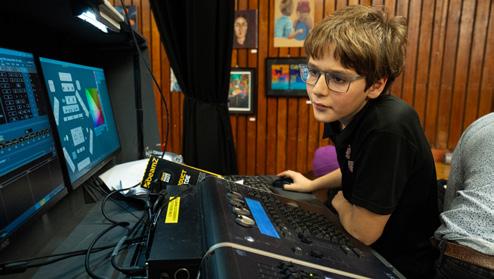


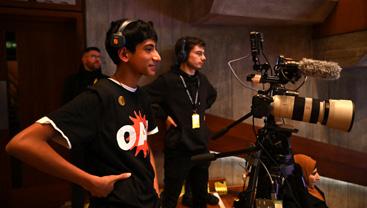
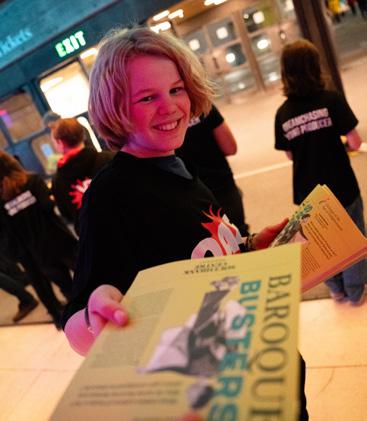
Now in its third year, the Dreamchasing Young Producers has evolved into an influential programme at the school, equipping young people with professional skillsets in project management, filmmaking, lighting, sound, set and costume design. The graduates from the first years now serve as tutormentors for new recruits and return regularly to support the OAE as valuable project support when life gets busy. The programme also supports the roll out of the T-level qualification in a new state of the art media centre at the school. This qualification, in Media, Broadcast and Production, is the equivalent of a conventional set of A levels, and prepares students for entry to work and higher
education in this important sector of the UK economy. The OAE is a proud corporate partner in this innovation.
You will see Dreamchasing Young Producers support front and backstage life at our Southbank Centre series, but this is the tip of the iceberg which, alongside routine training from OAE staff, players and guest experts, sees students from Year 7 onwards working on a range of challenging enterprises: a new podcast channel for the OAE, original film work for YouTube and Marquee TV, professional production values at school based events and new concept work with OAE partners for forthcoming seasons.

Our work in London primary schools is one of the highlights of the OAE’s Education programme. Each year we offer three educational programme strands to our partner schools across London: Early Years, for Nursery and Reception; Key Stage 1 (KS1), for students in Years 1 and 2; and Key Stage 2 (KS2), for those in Years 3 to 6.
This season, with the Orchestra’s 2024/25 theme ‘the whole world is an enigma’ in mind, we have been exploring everything from musical surprises to the hidden links between classical and folk ‘musicks’ with students in Brent, Camden, Ealing, Harrow and Wandsworth.
“I liked the dancing and all the instruments and I liked the lovely music. I was loving the story and I liked the actions.”
EARLY YEARS STUDENT
Each project involves a teacher training day, in-school workshops with our players, and a culmination concert, in which pupils become active performers: singing, playing and listening. We provide in-depth resources (both printed and digital), allowing teachers and music specialists to support the projects in the classroom and building a legacy of work for them to draw upon.

“They’re telling all their friends about it. The other year groups are also talking about it who haven’t even been part of it.”
KS1 TEACHER
In March, students in Years 1 and 2 took part in the Key Stage 1 ‘Full of Surprises’ concerts by composer James Redwood which delved into the surprises found in six Haydn symphonies. Pupils discovered the composer’s unusual sense of humour and learned about musical building blocks and the instruments of the orchestra.
“It was fantastic. We’ve got Year 1s, who are five and six [years old], and if I try and talk to them for more than about two minutes in a row they get very fidgety and this was an hour-long concert and they were all so engaged throughout which was fantastic.”
KS1 TEACHER
At the same time, Early Years students experienced ‘A Day at the Pond’, a collaboration between the OAE, Orchestras Live, Amazing Music Projects (AMP) and South Asian Arts-uk (SAAuk). Begun in 2021, this collaboration has seen SAA-uk and the OAE introduce children across the UK to their respective musical traditions through music, dance, and storytelling.
“We felt very priviledged to be able to experience a performance like this. The children and accompanying parents all loved it and at least one of the children has asked for double bass lessons!”
EARLY YEARS TEACHER
This year’s KS2 strand – ‘Dancing, Moving, and Musicking’ – developed by composer Raphael Clarkson, encourages students to listen out for the hidden links between historical classical music and folk music of the same era. In preparation for the culmination concerts in July, pupils have been listening to Matthew Locke’s ‘Tempest Suite’ from 1667, which is full of rhythm, energy and movement.
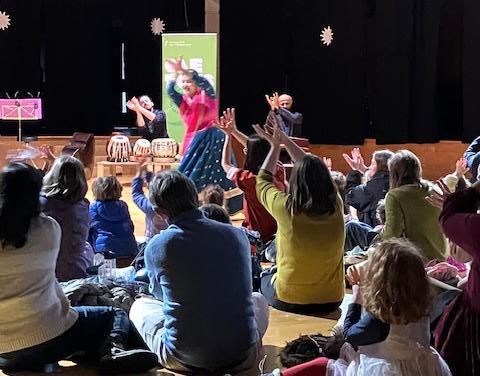
CLUE: CRACK THE CODE TO REVEAL THE HIDDEN WORDS FROM TONIGHT’S PROGRAMME.




